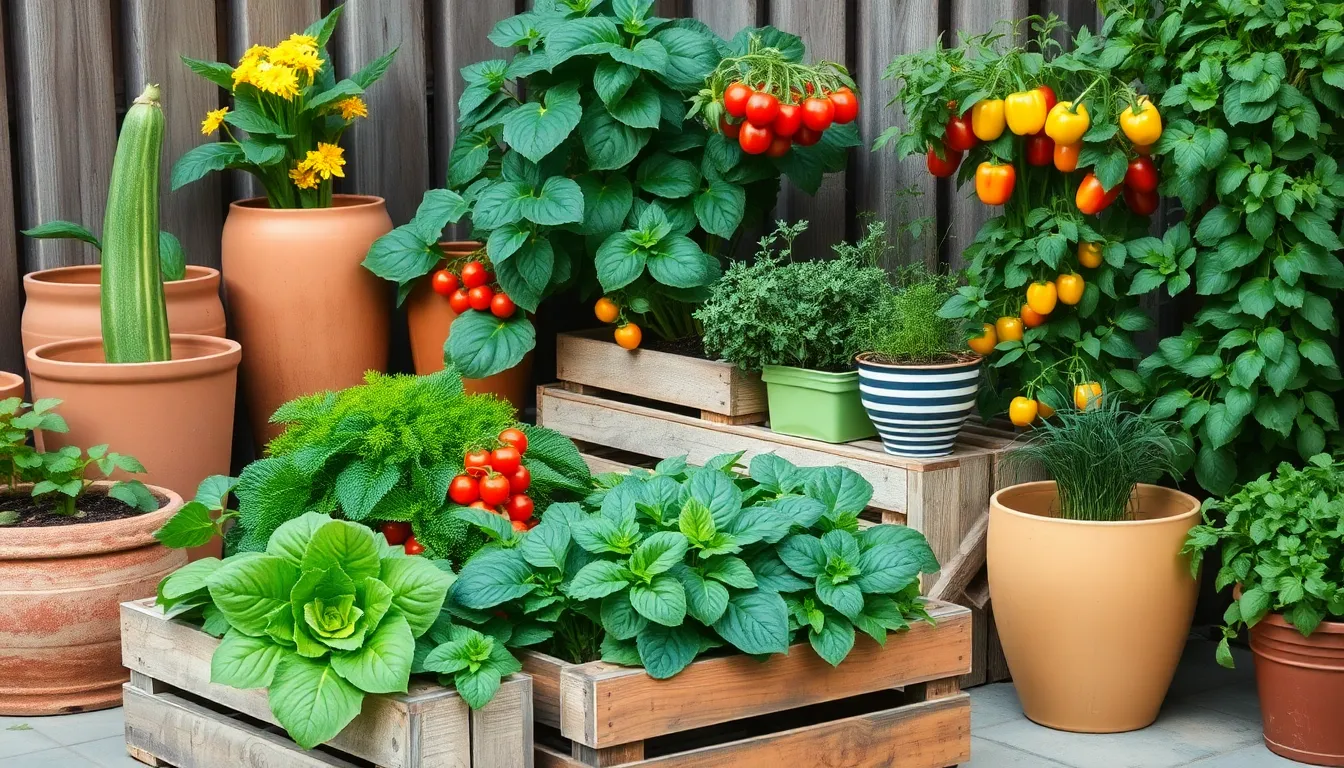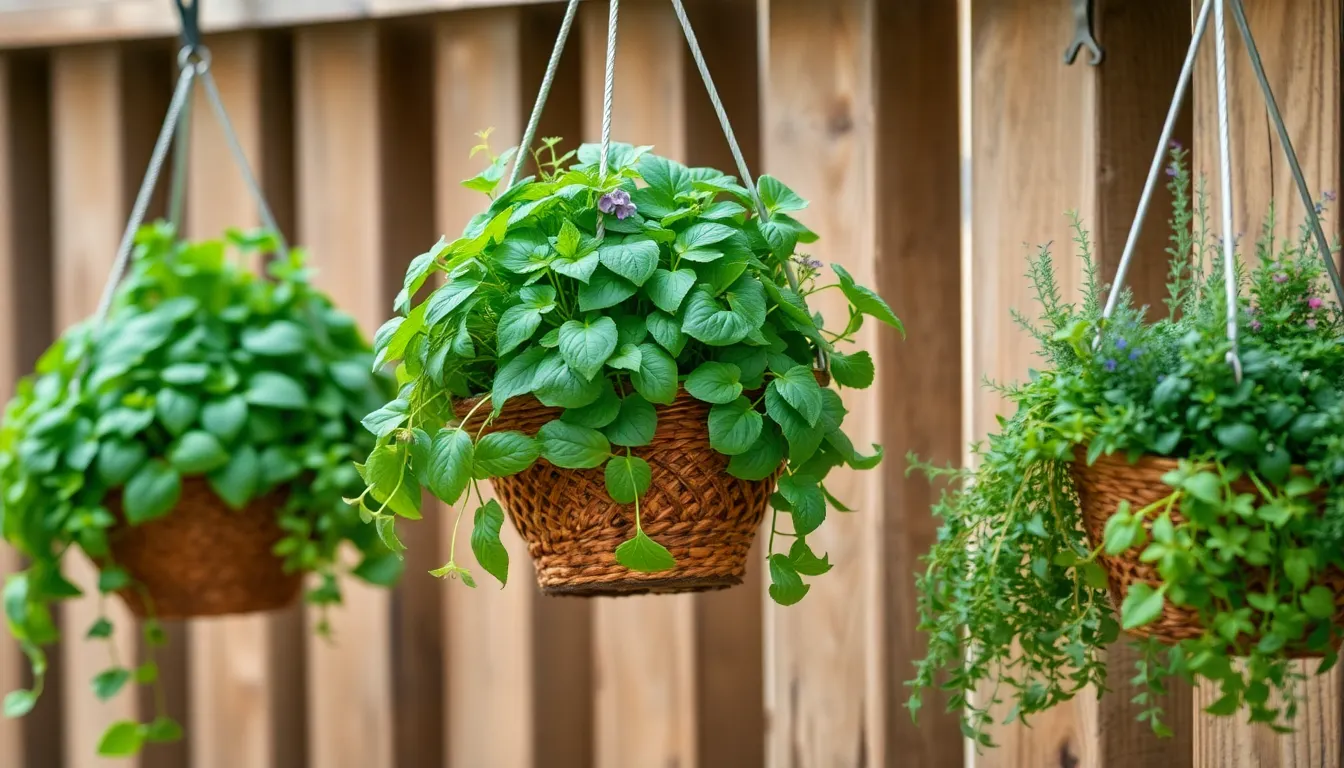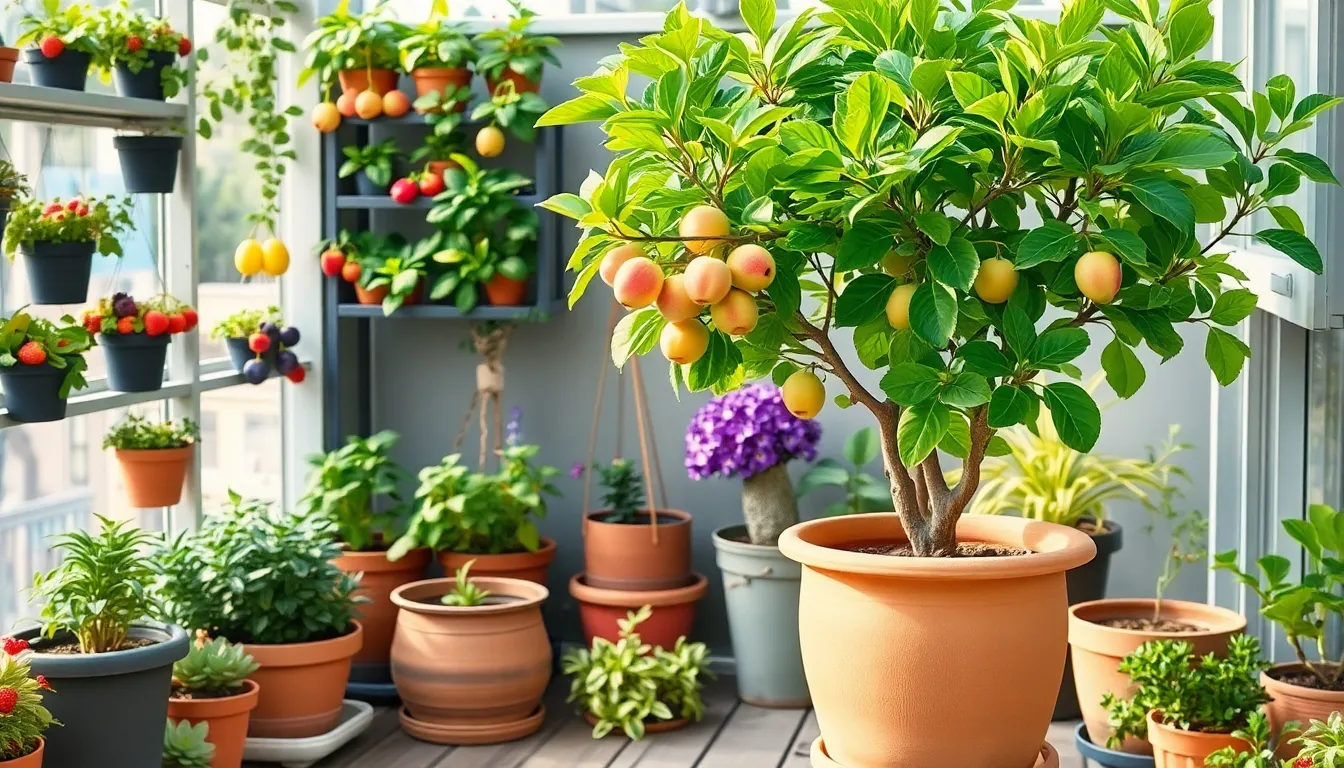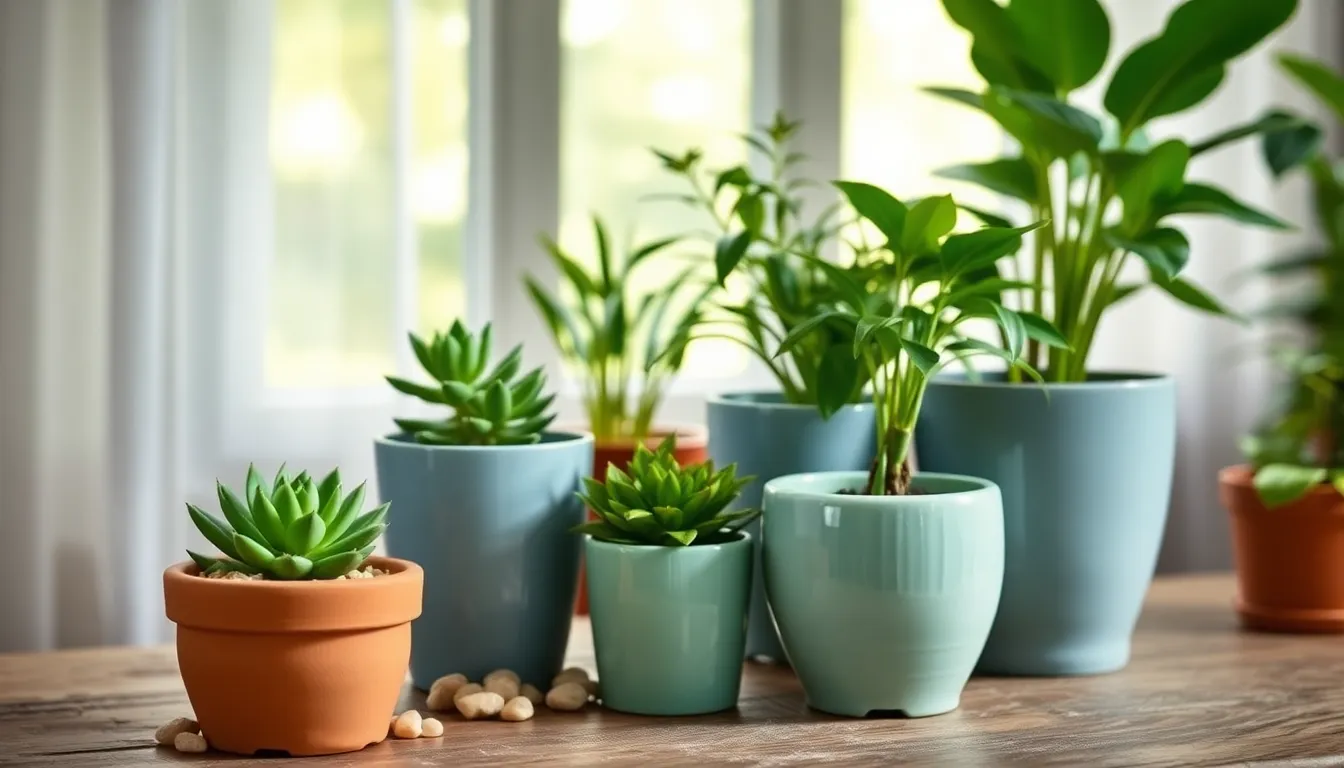Growing vegetables in containers opens up a world of possibilities, allowing anyone with a sunny spot to cultivate their own fresh produce. Whether you’re a city dweller with a small balcony or a seasoned gardener looking to maximize your space, container gardening offers a practical and rewarding solution. This method is not just for those with limited land; it’s also perfect for experimenting with different vegetables, offering flexibility and control over growing conditions.
For both beginners taking their first steps into the gardening world and experienced green thumbs seeking to refine their techniques, this guide will illuminate the path to successful container vegetable gardening. Here, you’ll discover how to select the right containers, choose the best soil, and understand the unique needs of various vegetables. With our guidance, you’ll learn to create a thriving garden that fits your lifestyle, all without the need for a sprawling plot of land. So, grab your trowel and join us as we delve into the art and science of growing vegetables in containers, transforming your space into a lush, edible oasis.
Select Suitable Container Size
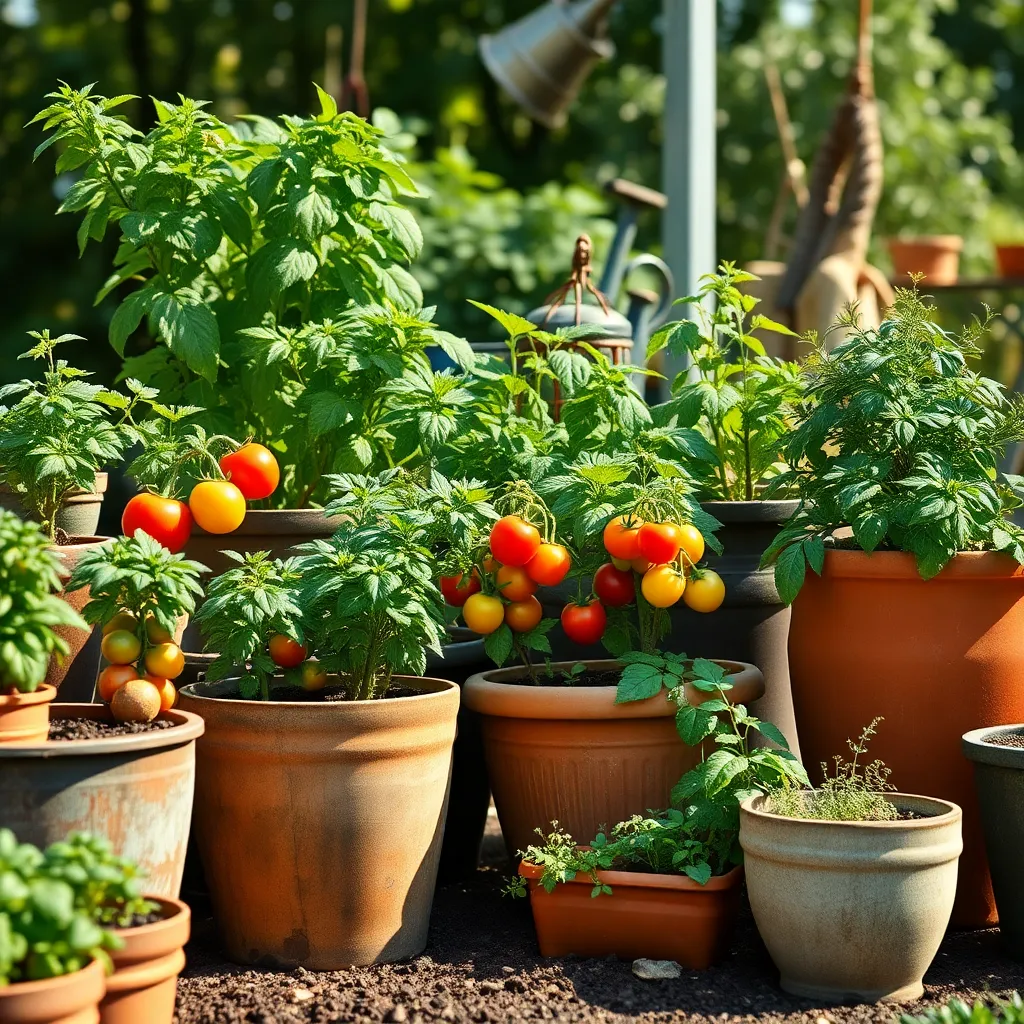
Choosing the right container size is crucial for the successful growth of your vegetables. The size of the container directly affects the root development and overall health of the plant.
For small vegetables like radishes and lettuce, opt for containers that are at least 6-8 inches deep. Larger vegetables, such as tomatoes and peppers, require containers with a depth of at least 12 inches to ensure sufficient root space.
It’s important to remember that adequate drainage is essential, regardless of container size. Ensure your containers have drainage holes to prevent waterlogging, which can lead to root rot.
Advanced gardeners may consider using self-watering containers, which help regulate moisture levels and reduce the frequency of watering. These containers are particularly beneficial for water-sensitive plants and busy gardeners who may not be able to water daily.
Prepare Well-Draining Soil Mix
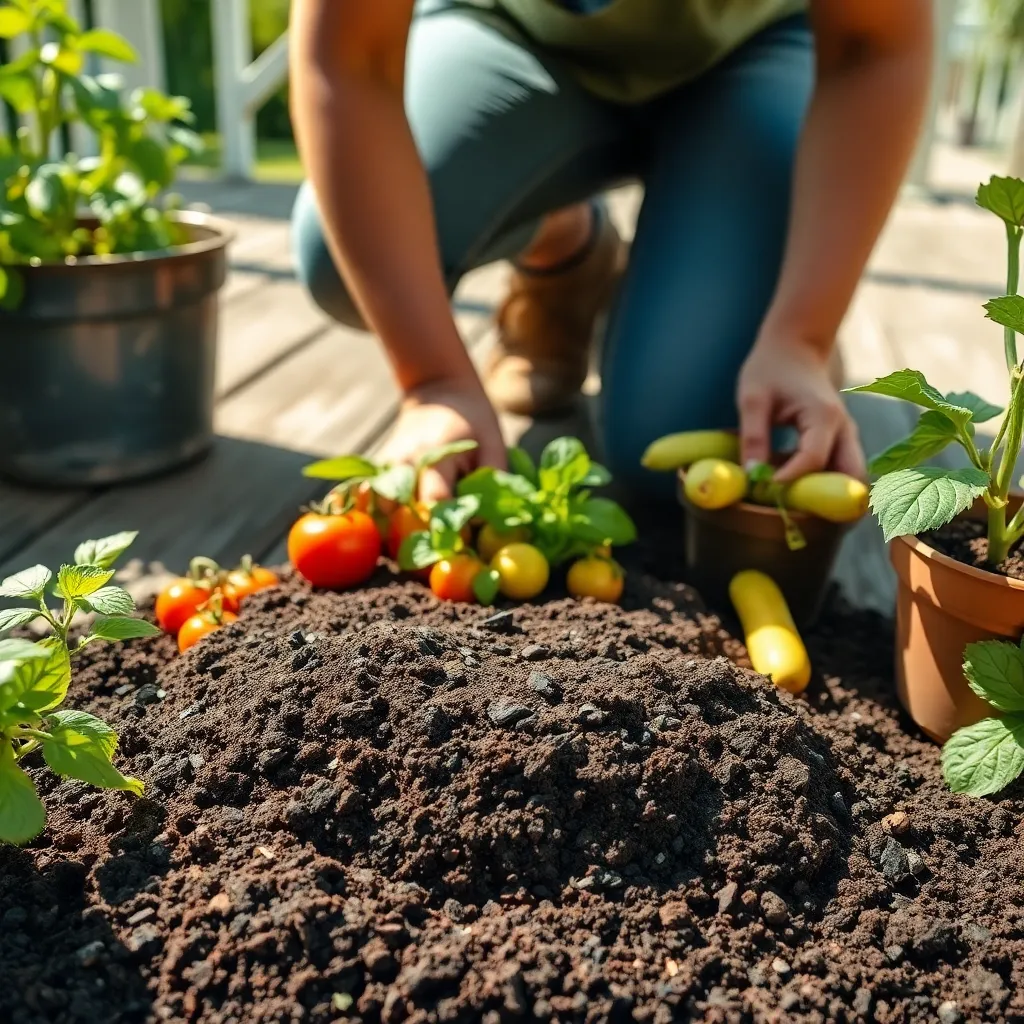
Creating a well-draining soil mix is essential for growing healthy vegetables in containers. A good mix allows water to flow freely, preventing root rot and promoting robust growth.
Start with a base of high-quality potting soil, which is designed to retain moisture while allowing excess water to escape. Look for a mix that includes ingredients like peat moss or coco coir, which help retain moisture, and perlite or vermiculite, which improves drainage.
Adding organic matter can further enhance your soil’s quality and drainage. Consider mixing in compost or aged manure to provide nutrients and improve the soil structure.
For those growing root vegetables, such as carrots or radishes, ensure your soil mix is loose and airy. This allows roots to expand easily and helps prevent deformities.
Here are some tips to ensure your soil mix is optimal for container gardening:
- Mix equal parts of potting soil, peat moss, and perlite for a balanced blend.
- Test the soil’s drainage by watering thoroughly and ensuring excess water drains out within a minute.
- Avoid using garden soil as it can compact in containers and limit drainage.
Regularly check the moisture level of your container soil to prevent overwatering. A simple finger test can help: insert your finger into the soil up to the first knuckle; if it feels dry, it’s time to water.
Plant Seeds at Correct Depth
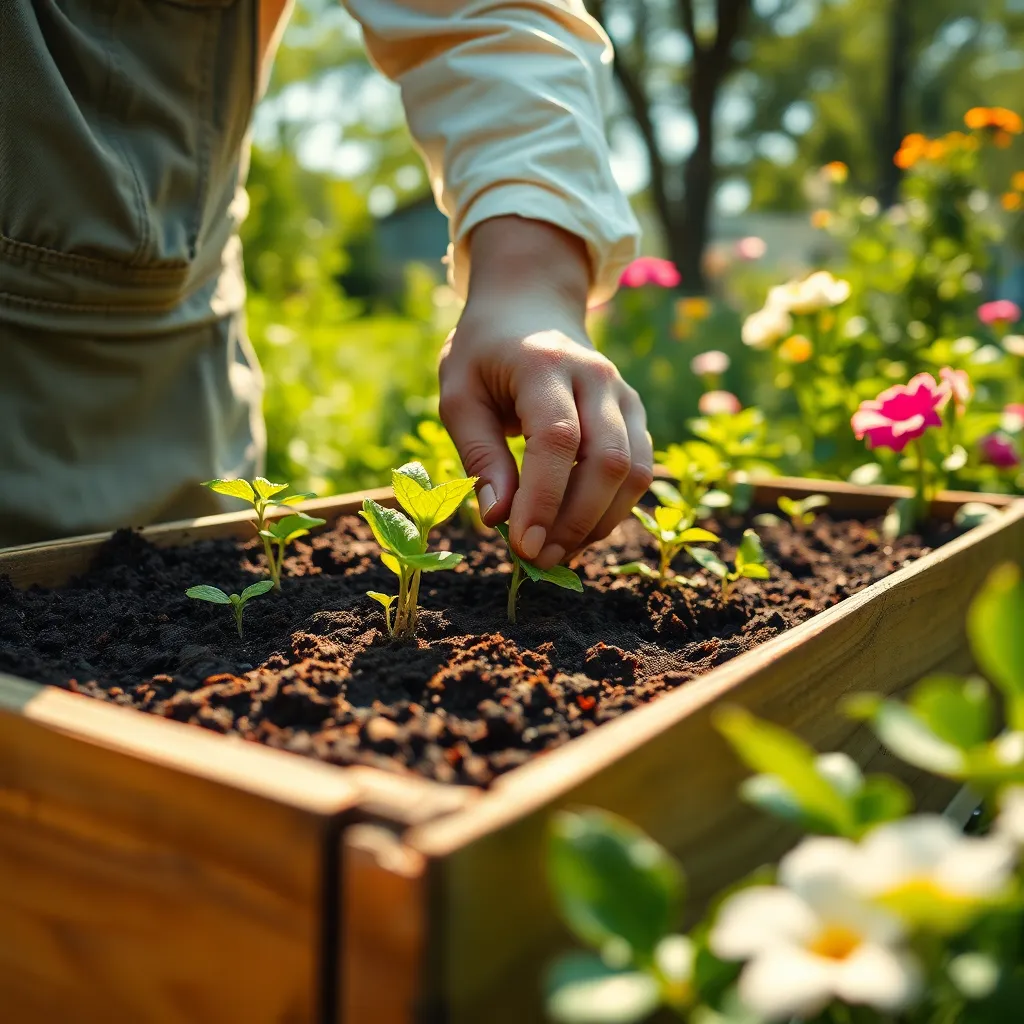
When planting seeds in containers, it’s crucial to plant them at the correct depth to ensure successful germination. Generally, small seeds should be planted at a depth of about 1/4 inch, while larger seeds can be sown deeper, around 1 inch.
Start by consulting the seed packet for specific depth recommendations, as different plants have unique needs. If you cannot find guidance, a good rule of thumb is to plant seeds at a depth of two to three times their diameter.
To make planting easier, use a small dibber or your finger to create a hole in the soil at the appropriate depth. After placing the seed in the hole, gently cover it with soil and lightly pat down to ensure good seed-to-soil contact.
Providing the right depth helps prevent seeds from drying out or being washed away when watering. For seeds that require light to germinate, such as lettuce, simply press them into the soil surface without covering them.
Ensure Adequate Sunlight Exposure
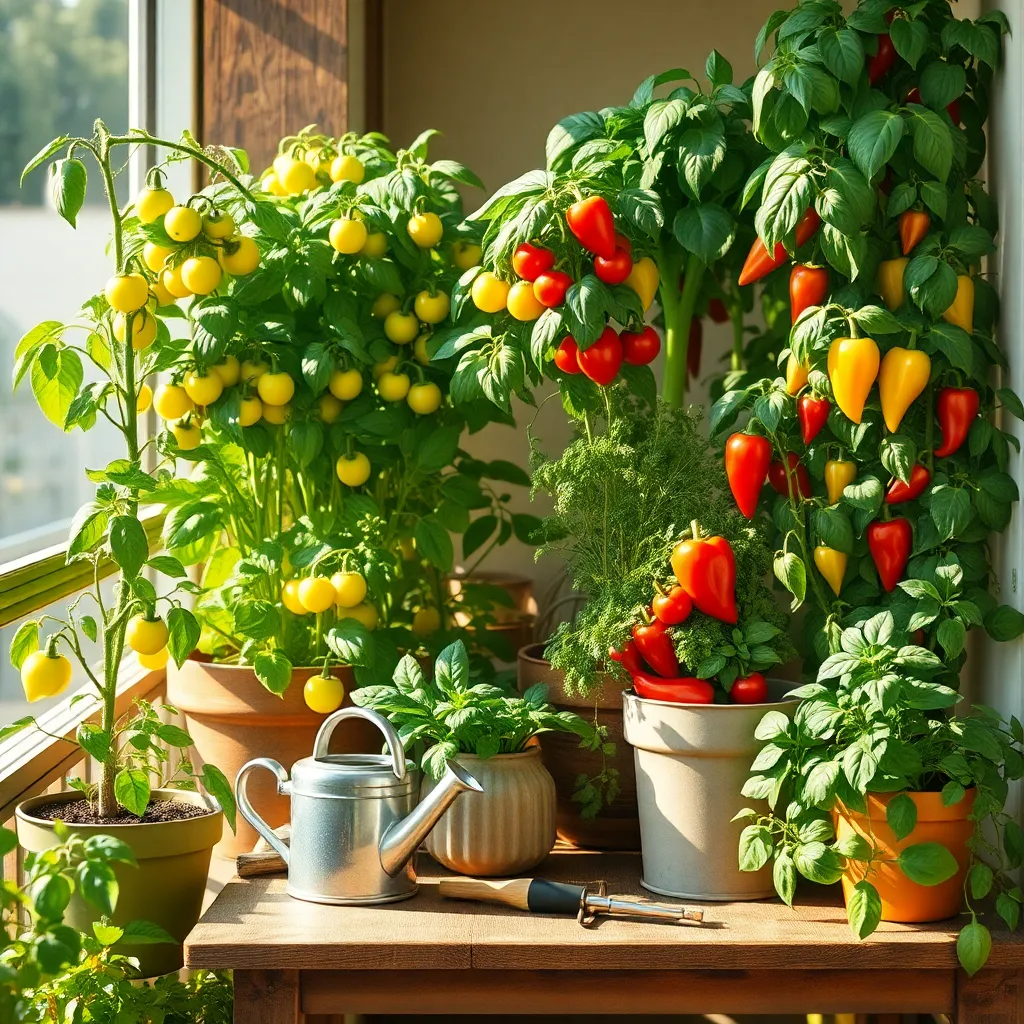
Ensuring that your container vegetables receive adequate sunlight is crucial for their growth and productivity. Most vegetables require at least six to eight hours of direct sunlight daily to thrive, so choose a spot that meets these light requirements.
Consider the movement of the sun throughout the day to optimize sunlight exposure for your plants. If natural light is limited, you might need to use grow lights to supplement and ensure your plants get the necessary light.
When positioning containers, keep in mind that taller plants can cast shadows on shorter ones. To avoid this, arrange your containers so that taller plants are at the back or on the north side, allowing shorter plants to access full sunlight.
For those living in areas with intense sunlight, it may be beneficial to provide some shade during the hottest part of the day. Use a light cloth or strategically placed umbrella to prevent sunscald and protect your plants from excessive heat.
Water Consistently and Monitor Growth
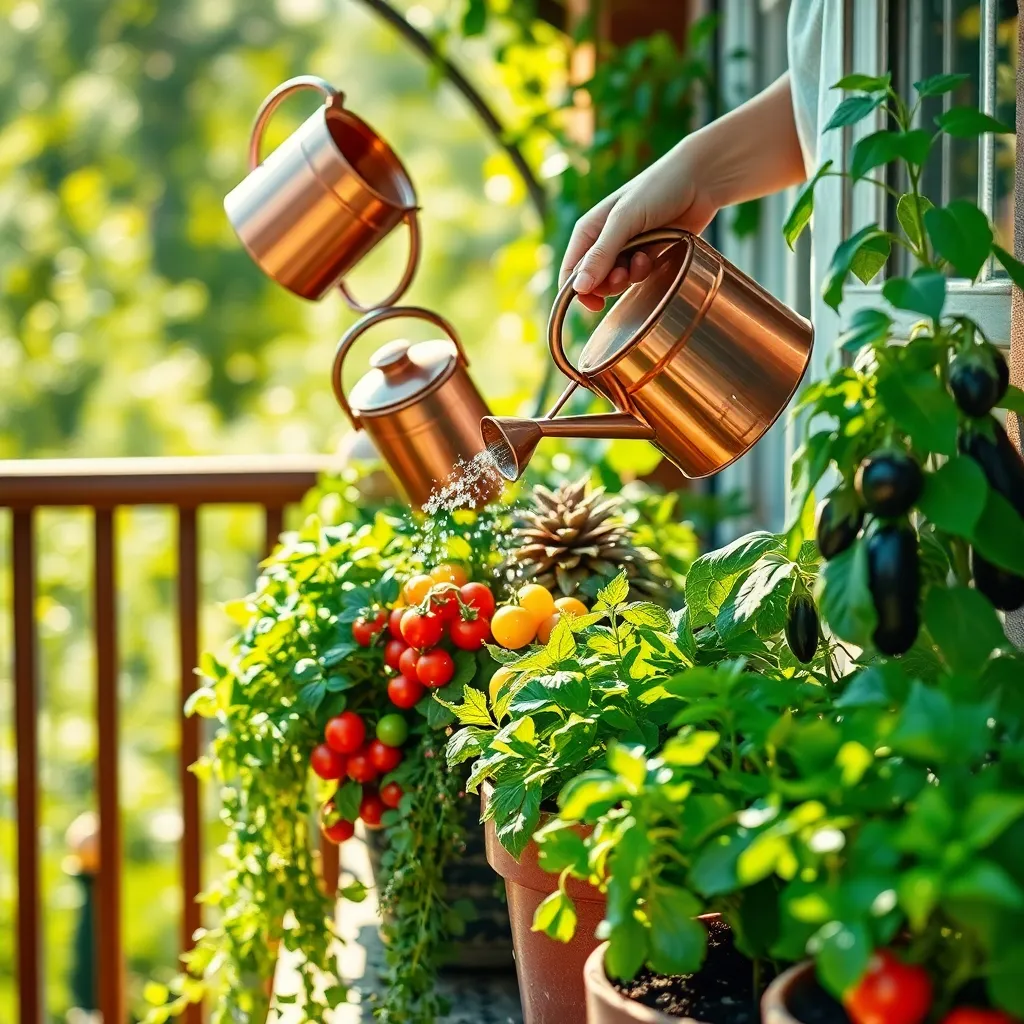
Consistent watering is crucial for successful container gardening because container soil can dry out more quickly than garden beds. Check the moisture level daily by inserting your finger about an inch into the soil; if it feels dry, it’s time to water.
To ensure even moisture distribution, water until it drains from the bottom of the container. This practice not only prevents waterlogging but also helps flush out excess salts that can build up in the soil.
For beginners, a general watering schedule might involve watering once a day, especially during hot weather. However, more experienced gardeners might consider using a self-watering container or a drip irrigation system to automate and optimize watering.
Monitoring plant growth is as important as watering; it helps you catch issues early. Check for signs of stress, such as yellowing leaves or stunted growth, which might indicate overwatering, nutrient deficiencies, or pest problems.
Maintaining a gardening journal to record growth patterns and any issues can be incredibly helpful. This practice allows you to track what works best for your plants and adjust your care routine accordingly.
Advanced gardeners might use a moisture meter to get precise data on soil moisture levels, ensuring their plants are thriving. Consistent monitoring and adjusting your care routine based on your observations are keys to a bountiful harvest.
Conclusion: Growing Success with These Plants
In cultivating a thriving relationship, much like growing vegetables in containers, attention to detail and nurturing practices are essential. This article outlined five key concepts: understanding the importance of space and environment, ensuring proper communication (or drainage), providing consistent nourishment, showing patience and adaptability, and celebrating growth together. By applying these principles, your relationship can flourish, even in the most compact or challenging situations.
As a next step, take a moment to discuss with your partner how each of these concepts can be implemented in your relationship. Whether it’s carving out more quality time together or learning to listen more effectively, these small acts can yield a bountiful harvest of connection.
To continue nurturing your relationship, bookmark this article as your go-to guide, offering you valuable insights whenever you need a refresher. By keeping these strategies at your fingertips, you pave the way for a relationship that doesn’t just survive but thrives.
Remember, investing in your relationship today sets the stage for a future filled with mutual growth and understanding. Let this be the start of your journey to a robust, joyful partnership. Save these insights, and let your relationship bloom like a well-tended garden.

